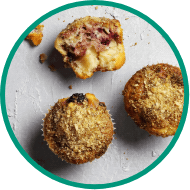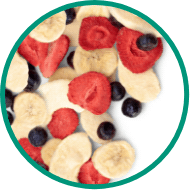Did you know that over 30% of all the food produced globally is being tossed out or goes to waste1? At each stage of the supply chain — from farm to fork — food is discarded due to a shorter shelf life. To tackle this food waste crisis, environmentally conscious brands are working to develop shelf stable foods made from ingredients that normally would’ve been tossed out.
When these ingredients are freeze-dried, or processed, the shelf life is often extended, making it ideal to incorporate within new innovations. By doing this, companies around the world are enhancing the value of a product, cutting down on food waste, and helping to feed more people around the world.
We spoke with the R&D team at Chaucer Foods, to learn more about the rise in interest in “food waste reduction” products and to explore ingredients that can help spark your next innovation.

Q: What are “food waste reduction” foods?

Q: How has the interest in food waste reduction grown over the years? Do you expect it to continue growing?

Q: What technologies and ingredients does Chaucer Foods offer to advance this trend?
Our unique technological processes allow for a 6 –12-month shelf life for baked ingredients and up to a 12 – 18-month shelf life for freeze-dried, providing a solution for ambient stabilization, nutrient preservation, colour retention—while still being clean label friendly and delicious. From beverages to snacks, these technologies offer solutions to innovate longer-lasting, bettertasting, nutrient-dense formulations with the inclusion of our freeze-dried fruits and vegetables and baked ranges. On top of the shelf-stability of our ingredients, the technology allows us to provide offerings that have a wide range of textures, bold tastes, shapes, packaging formats, and flavours

Q: What benefits are consumers looking for in food waste reduction products?

Q: How does this trend shape the industry?

Q: What formulations work best with ingredients that help reduce food waste?

Q: What are the most common
challenges associated with these products? What can a brand do to navigate those challenges?

Looking for more information on how to use freeze-dried ingredients to innovate natural products? Contact us at customer.services@chaucerfoods.com to connect with our team.
References:
1 Growing the Upcycled Food Economy,” Upcycled Food. 2023.